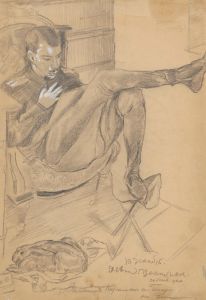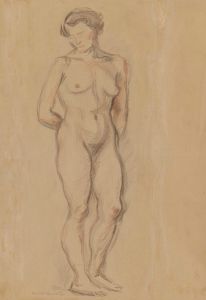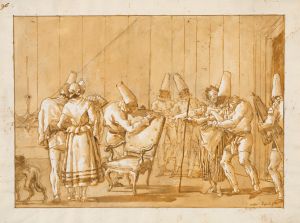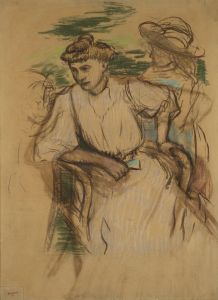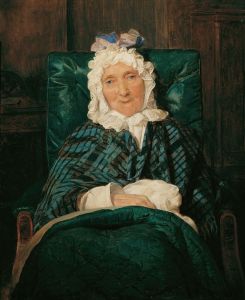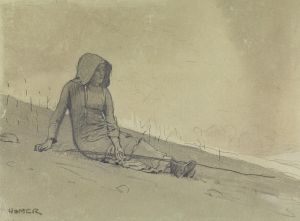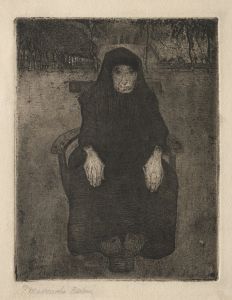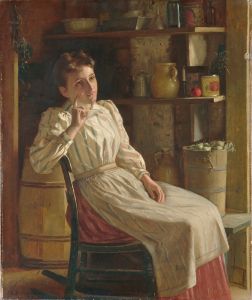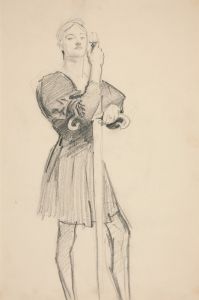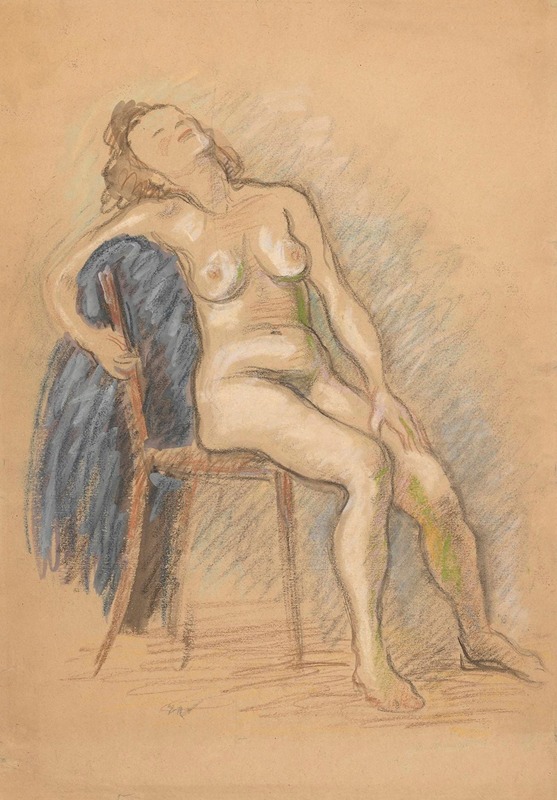
Nude sitting in a chair
A hand-painted replica of Zygmunt Waliszewski’s masterpiece Nude sitting in a chair, meticulously crafted by professional artists to capture the true essence of the original. Each piece is created with museum-quality canvas and rare mineral pigments, carefully painted by experienced artists with delicate brushstrokes and rich, layered colors to perfectly recreate the texture of the original artwork. Unlike machine-printed reproductions, this hand-painted version brings the painting to life, infused with the artist’s emotions and skill in every stroke. Whether for personal collection or home decoration, it instantly elevates the artistic atmosphere of any space.
Zygmunt Waliszewski was a Polish painter known for his contributions to the art world during the early 20th century. He was born on December 1, 1897, in Saint Petersburg, Russia, and later moved to Poland, where he became an influential figure in the Polish art scene. Waliszewski's work is often associated with the Post-Impressionist movement, and he is known for his vibrant use of color and expressive brushwork.
"Nude Sitting in a Chair" is one of Waliszewski's notable works, although specific details about the painting, such as its creation date and current location, are not widely documented. The painting is representative of Waliszewski's style, which often included bold colors and a dynamic approach to form and composition. His works frequently depicted figures and scenes with a sense of movement and emotional depth.
Waliszewski's artistic journey began with his studies at the Academy of Fine Arts in Kraków, where he was influenced by the works of European masters and the avant-garde movements of the time. His exposure to various artistic styles and techniques is evident in his diverse body of work, which includes portraits, landscapes, and still lifes, in addition to nudes.
The painting "Nude Sitting in a Chair" likely reflects Waliszewski's interest in the human form and his ability to convey emotion and character through his subjects. His nudes often exhibit a sense of intimacy and immediacy, capturing the essence of the sitter with a few deft strokes. The use of color in his paintings is particularly noteworthy, as Waliszewski employed a palette that was both vivid and harmonious, enhancing the emotional impact of his work.
Throughout his career, Waliszewski was part of several important art groups and exhibitions, which helped to establish his reputation as a leading figure in Polish art. He was associated with the "Formists," a group of artists who sought to break away from traditional artistic conventions and explore new forms of expression. This involvement with the Formists likely influenced his approach to painting, encouraging him to experiment with form and color.
Despite his relatively short life—Waliszewski died on October 5, 1936, in Kraków—his work left a lasting impact on the Polish art scene. His paintings are held in various collections and continue to be studied and appreciated for their contribution to the development of modern art in Poland.
In summary, while specific details about "Nude Sitting in a Chair" are limited, the painting is an example of Zygmunt Waliszewski's distinctive style and his ability to capture the human form with emotional depth and vibrant color. His work remains an important part of the Polish art heritage, reflecting the dynamic changes and innovations in art during the early 20th century.










